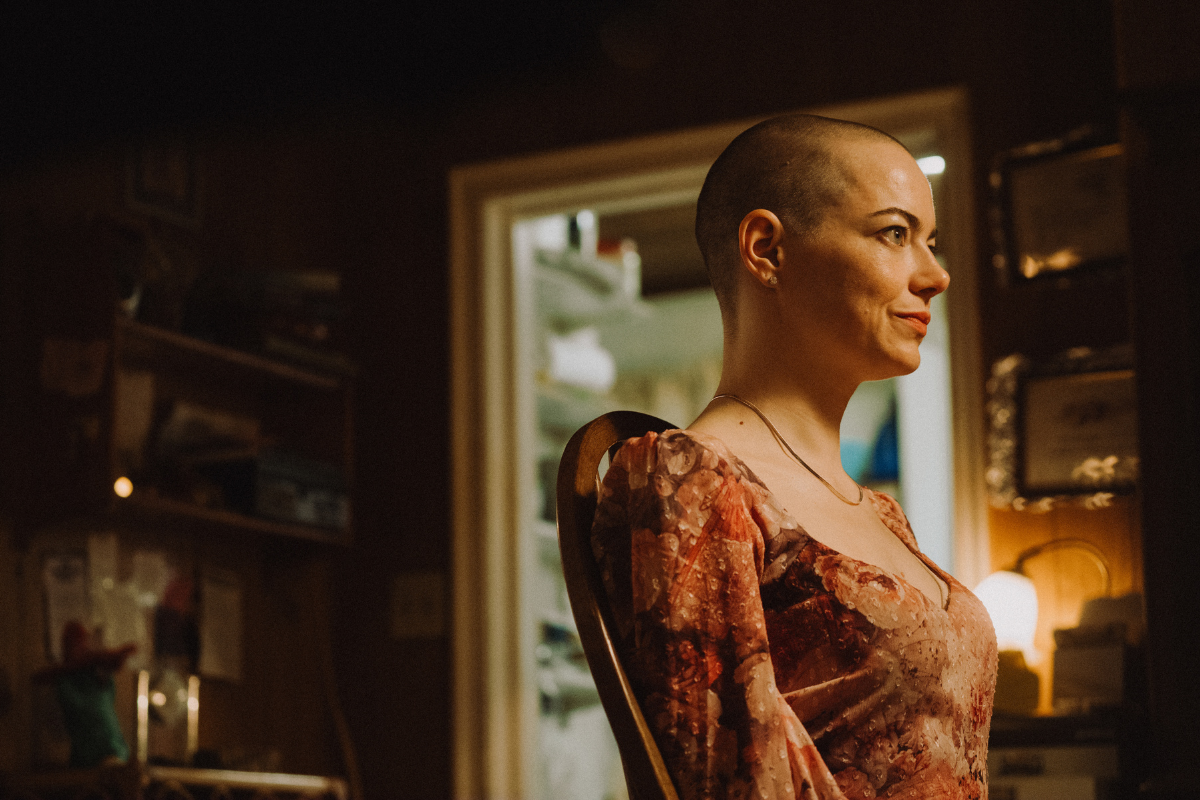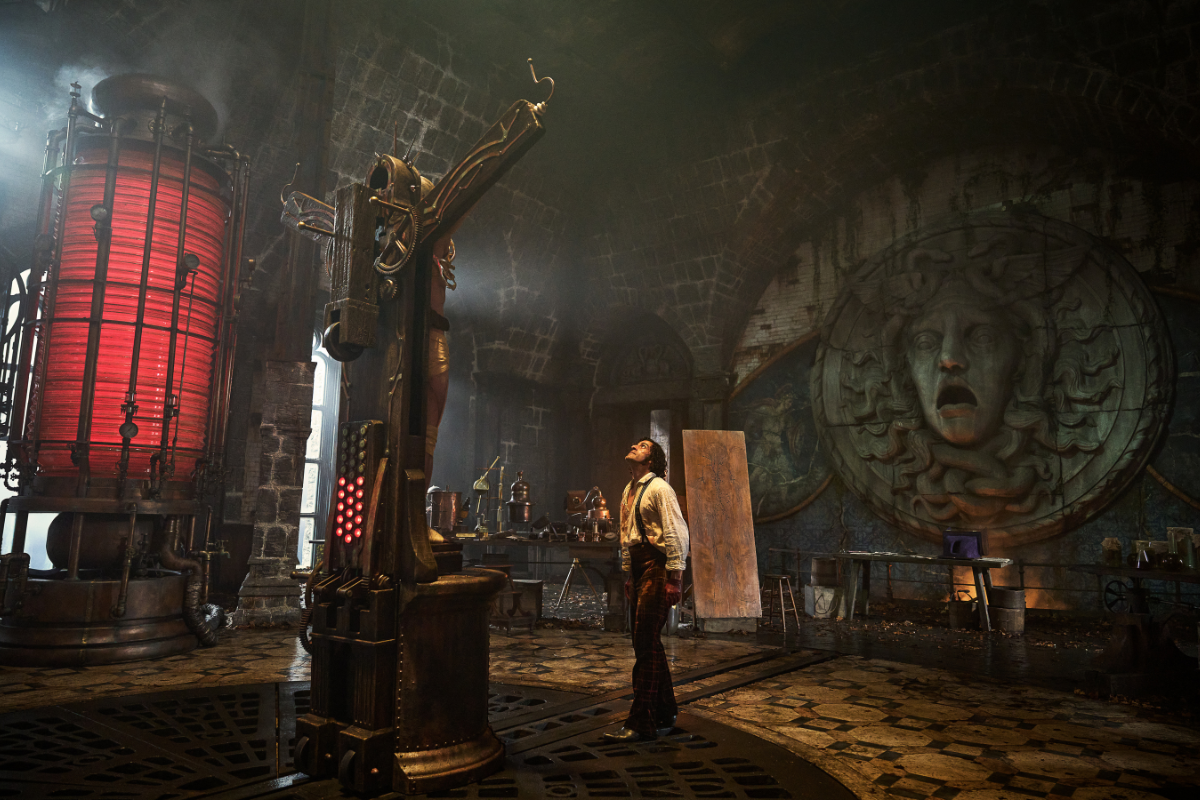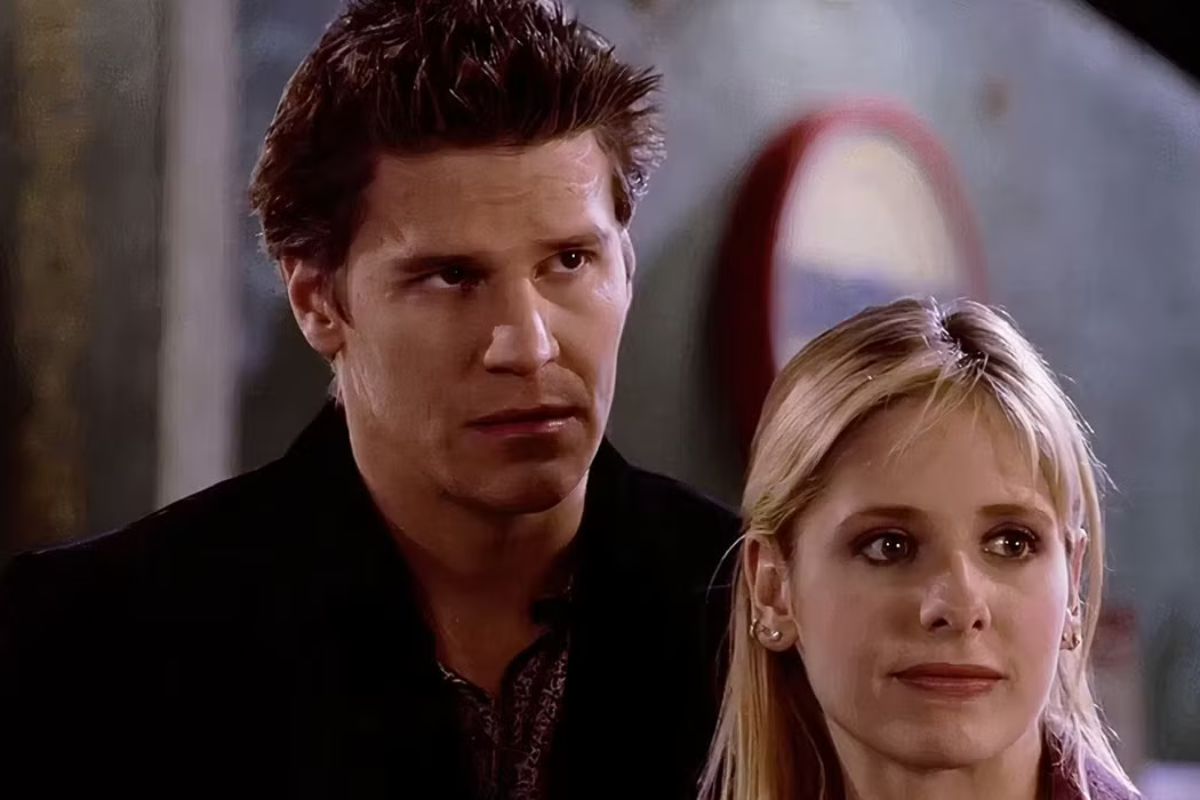WRITERS ON WRITING: Simon Beaufoy on Writing Slumdog Millionaire
Oscar®-nominee Simon Beaufoy headed for the slums of Mumbai to find out what he didn’t know. Beaufoy reflects on what he learned while writing Slumdog Millionaire.
Oscar®-nominee Simon Beaufoy headed for the slums of Mumbai to find out what he didn’t know. Beaufoy reflects on what he learned while writing Slumdog Millionaire.
"Write about what you know." That phrase. It haunts the corridors of the scriptwriter’s brain, drilled into us by dimly remembered, straggly haired fi lm school tutors.
I know what they mean, and what they’re truly afraid of—another eager student’s 200-page android love-comedy set on Alpha Centura—but really ... write about what you know? Are you sure? Where’s the fun in writing about what you know when you can instead dive headlong into the new, the exotic, the utterly unknown?
Which is how I come to be lost in the maze of alleys in Mumbai’s Juhu slum, a network of dark passages a few feet across that contains dogs, chickens, water pipes, open sewers, and thousands and thousands of families. I am being pursued by two-dozen grubby Indian kids all pointing and laughing at my pink, sunburnt face. Not for the first time, I reflect that perhaps I’ve bitten off more than I can chew.
“Hey, Mr. Bean, you hot?” says a 10-year-old troublemaker. Swallowing the Mr. Bean reference, I agree that it is certainly hot. Uproarious laughter, delighted slapping of hands. I’ve clearly fallen into their trap. “No, Mr. Bean! It’s cool today!”
The ankle-biters who aren’t engaged in this good-natured humiliation even look a bit sorry for me. Wait a minute, are they pitying me? Isn’t the Rich White Tourist supposed to pity the Poor Indian Slum Dweller? Not for a second. It doesn’t once occur to me to pity these giggling streaks of lightning charging around the slum taking the piss out of me with such broad smiles. This is interesting. I must make a note of that. If I can ever find a way out of here.
I see light at the end of a long, dark alley, skip over the river of sewage running its length, and finally pop out into sunshine and space. The children run after me, laughing even harder. “No, no, Mr. Bean!” And now I see why. I have walked straight into the slum’s toilets. But these are toilets as I’ve never seen them before. Rickety, wooden piers stretch along and above the slum’s massive rubbish dump. Perched at the end of each pier is a tiny shack with only three walls and a hole in the floor boards. Where the fourth wall should be is nothing but open air and a magnificent view of Juhu’s private airfield. Every morning, the poorest people in the world sit doing their business watching the richest people in the world fl y in to do their business. Nothing could sum up the Mumbai experience more perfectly. I didn’t quite know how or why, but I was sure I had found the first scene of the film.
The galley proofs of Vikas Swarup’s vibrant, sprawling novel Q & A had been given to me a few months earlier. Tessa Ross at Film4 was convinced that a film lay in there somewhere, though she was as puzzled as I was about how to tease it out. There was something deeply intriguing about the premise of a slum kid winning the Indian version of Who Wants to Be a Millionaire. Equally intriguing, and in film terms problematic, was the structure.Each chapter of the book explained how the kid happened to know the correct answer: in effect, a series of short stories. But while some of the stories linked together, others fi red off into fascinating but unconnected tangents about Australian spies, fading Bollywood stars, or the Indo-Pakistani conflict. There was no single, unwavering arrow of narrative to take an audience all the way through, apart from the game show. And somehow, a game show just wasn’t enough for me.
I just can’t get excited about money as a motivation in a film. It leaves me cold. My heart does not sing if the fin al shot of the fi lm is a slum kid snapping on a Rolex, getting in his Porsche, and driving off into the sunset. In fact, my heart sinks. So, how to make a rags-to-riches story without it involving money? There was only one way to find out: go to Mumbai.
They say that if you get caught in an avalanche, it is hard to know whether you are facing up or down when the tumbling stops.
The Mumbai slums are like an avalanche of the senses. An excess of smell, noise, taste and color assaults the brain. Once I’ve turned the first corner, I’m not sure which way I came in or how I’ll ever get out. But in this avalanche, something becomes abundantly and wonderfully obvious. I absolutely know that this film just has to be a love story. India is brazenly romantic, utterly unashamed of its sentimentality, its generosity, its fierce pride, its massive heart. From the Taj Mahal—perhaps the world’s greatest monument to lost love—to every Bollywood song-and-dance spectacular, India wears its heart on its flowing sleeve.
The euphoria of this discovery is soon replaced by the frightening realization that I will have to reinvent the whole journey of the central character, Jamal the slumdog. I will also have to create the love of his life, Latika, and make their love story, not the quiz show, the real crux of the film. But what does a middle-class, white Englishman know of Mumbai enough to invent an Indian slum dweller’s life story? Not much. I decide that the only way to do this with any authenticity is to return to my documentary roots. I wander the slums apparently aimlessly, chatting to the children, community leaders, school teachers, beggars, rag-pickers; picking up gossip from the tea-stalls, snippets from the papers, gathering a patchwork of stories that might, goodness knows how, knit together. A gangster trial is never off the front page of The Times of India. The Hindu-Muslim tensions are bubbling up gain, and the gang of beggars at one road underpass tells me as much as a Dickens novel ever could about the pay scale of mutilation.
And it isn’t just a factual education. Something strange is happening to my writing. The usual, rather mealy mouthed English nuance and subtext is being replaced by something that is bordering on melodrama. What use is subtext in a city of such total extremes? Nuance doesn’t stand a chance in the car-horn symphony of a Mumbai traffic jam. So a torture scene is followed by a comedy toilet scene, the blinding of a child by a Buster Keatonesque stunt sequence. Tonally, it really shouldn’t work. In any other city in the world, I suspect it wouldn’t work. But in Mumbai, not for nothing known as Maximum City, somehow I get away with it. It is only a matter of time before the inevitable happens and I write in a Bollywood song-and-dance number ...
As a child growing up in a gray-skied Yorkshire village, I would occasionally happen upon a Bollywood movie on the television. After a few minutes watching a bunch of sariclad dancers cavorting on a Swiss mountain to tuneless music, I would switch over to some proper drama. In the British tradition of naturalistic drama, Bollywood films just looked ridiculous. But 25 years later, sitting in one of Mumbai’s aircraft hangar-sized cinemas, I finally understand. Twenty minutes into the film, everyone is still chatting away, a couple in front are having their dinner, their children charging up and down the aisles, and most of the men are still shouting away on their cell phones. Then the song-and-dance number comes on. The projectionist cranks up the volume to an even more unsafe level and I am hit with a wave of sound, color, and amazing dancing. The music is part traditional, part hip-hop, part disco. Just like the tone of my script, it’s a ridiculous mixture that shouldn’t work. But it is infectious beyond anything I have heard in years. I mischievously decide to write the end dance sequence on the platforms of VT Station, Mumbai’s equivalent of Grand Central. That should keep the producers busy ...
Back in rainy England, the spirit of Mumbai is still burning bright in me. Whatever else I do, I resolve that it must have energy, grit, passion, and an utterly unrepentant romanticism. Remembering Mr. Bean in the slum, I resolve that it must have no sense of pity, no voyeurism.
The structure of the book defeats me for weeks as I try to transform it into a script. The story constantly moves backward and forward in time. Three different time frames: Jamal’s recent past on the game show, Jamal’s distant past, and Jamal’s present as he recounts the story of his life to the Police Inspector after his arrest. This jigsaw leaves me puzzled for weeks. I set myself the task to avoid any sense of flashbacks. No “10 years earlier” captions, no sepia tones. The past must be as real and as urgent as the present. As so often, after a while the script tells me what it really wants to be about. Not money, not even love—which is a surprise—but destiny.
In this city of 19-million people hurtling into the future, there is still, very present, an ancient sense of this word “destiny” that I find hard to define—even though I seem to have written a film about it. The poor live right next to the rich without any of that Western sense of entitlement or envy. There is a sense of rightness in whoever one is and whatever one is doing. Not passivity, but acceptance. How to explain that in a film? I can’t. I can only try to carry my sense of it into my characters and their lives.
Danny Boyle’s name is in my head as I write. There are so few British directors who are interested in rising above naturalism, and there is no director in the world who can match his sense of cinema as pure visual energy. As I later learn, he reluctantly decides to read 10 pages after hearing from his agent that it’s a script “about Who Wants to Be a Millionaire” in order to turn it down politely. When he sees that it’s about something altogether different, we meet. He has three or four notes that are clear and brilliant in their simplicity. He sets the bar about as high as it can get with one beautifully succinct sentence: “It has to be Romeo and Juliet, otherwise, why bother?” No pressure.
We visit India together. I take him to the places I visited. Or at least try to. I am convinced the driver has taken a wrong turn, but he is adamant. I had written a scene set on a colossal advertising hoarding over 100-feet high, surrounded on all sides by slum. But it has gone without trace and in its place is a half-completed skyscraper. In six months? Impossible. Not in Mumbai. The personality of this city on steroids becomes increasingly important to us: how it has become at once the epitome of capitalist opportunity and a merciless study in Darwinist economics. If you can’t keep up, you die. Not metaphorically, literally.
The casting is a high-wire act. Each of the three lead characters needs to be seen in the film at seven years old, 13, and at 18. Three actors for each person. They have to look believably similar and they all have to act some very tough scenes. Danny decides to cast it frighteningly young. As ever, if there is a safe option and a bold option, he will always favor the bold. Some wonderful people emerge, but the youngsters appear to be impossible. If we want them to speak English, they are by definition middle-class children and look nothing like the wiry streaks of impudence that dodge around the slums. For some reason, they really can’t act. Danny makes a call to our distributors. How do they feel about a third of the film being in Hindi? There is a long, long silence. Hindi with subtitles. Just what every studio wants. But to their credit, they go with it, and within days, we have three children from the very slum we are shooting in.
Two days before shooting, I have to change the lead character’s name. I don’t have to tell you that writers get attached to the names of their characters. But apparently the Muslim name I chose has recently been adopted by the odd high-profile Hindu. So I consult as many Mumbaites as I can find, agonizingly choose a new name that is definitively Muslim, and send an e-mail around to the entire crew warning them of the change. A flood of e-mails comes back. I can’t possibly choose that name as, although it’s definitely Muslim, it is subtly of the wrong class. Not slummy enough—though I have actually met real people in real slums called this name. Now perfectly humiliated by my inability to even get a name right, I e-mail the final name change. Jamal. No e-mail avalanche. But as I walk past the 13-year-old actor playing Jamal, he scowls at me. “Why did you change his name to that? Only bloody idiots are called Jamal.”
Write about what you know? Sometimes, no matter how much you research, how much you learn, you’ll never, ever, know.
Originally published in Script Magazine January/February 2009
SIMON BEAUFOY is an Oscar®, BAFTA, and WGA-nominated writer for his screenplay The Full Monty. In 2008, along with Slumdog Millionaire, he co-adapted Winifred Watson’s Miss Pettigrew Lives for a Day for the screen, and wrote the BBC mini-series Burn Up.
Learn more about screenwriting at the Writer's Digest Annual Conference, now offering a screenwriting track!
REGISTER NOW!
Top screenwriting and film publication, founded in 1989, published by Active Interest Media. Twitter: @scriptmag







